Central Penn Alumni Take Iceland: Day 3
Our first full day adventuring outside of Selfoss found us on the bus early (by 8:45 a.m.) and the sun had not yet appeared over the horizon. We were headed for the nation’s South Shore to take in the sights of waterfalls, volcanos, basalt columns, black sand beaches, and to visit a museum about “the olden times” as they call them.
About 25 minutes into the drive, we caught our first signs of the sun rising in the east and our first sights of Hekla – one of Iceland’s most active volcanos. The vikings that permanently settled this island around the year 874 (more about that later) named Hekla the “Gateway to Hell.” Does not sound like a very friendly mountain to settle near.
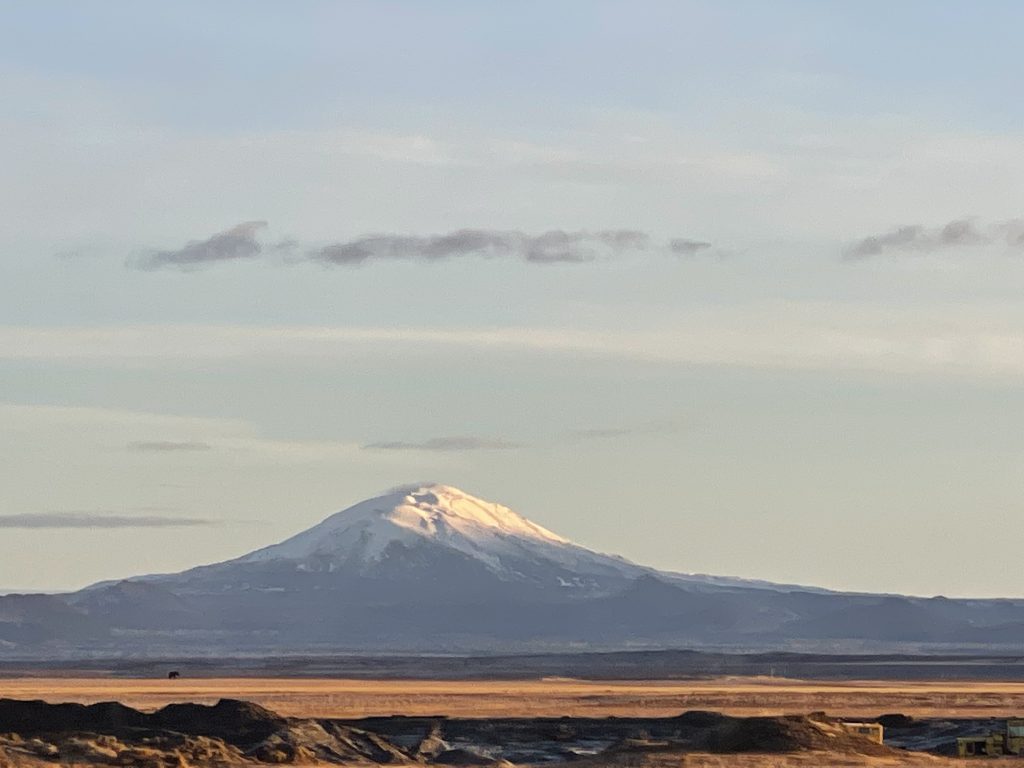
It took us about an hour to drive to our first scenic stop near Skogar. Here we stopped to view the glacier known as Eyjafjallajökull. Good luck pronouncing that aloud. Eyjafjallajökull is a glacier covering the caldera of an enormous and still active volcano. In 2010, an eruption at Eyjafjallajökull caused months of disruption across Iceland, Europe, and Northwest Asia as ash clouds ejected from the volcano covered the skies and hundreds of thousands of square miles for months.
Our guide – Margarette – describe how Icelanders like to hear of eruptions of the volcanos because the more frequent they are, the less destructive they will be. Unfortunately, this was Eyjafjallajökull’s first eruption in hundreds if not thousands of years. Scientists measuring the volcano have now deemed that this volcano has returned to dormancy.
Here are some photos of our stop to see the dormant volcano.
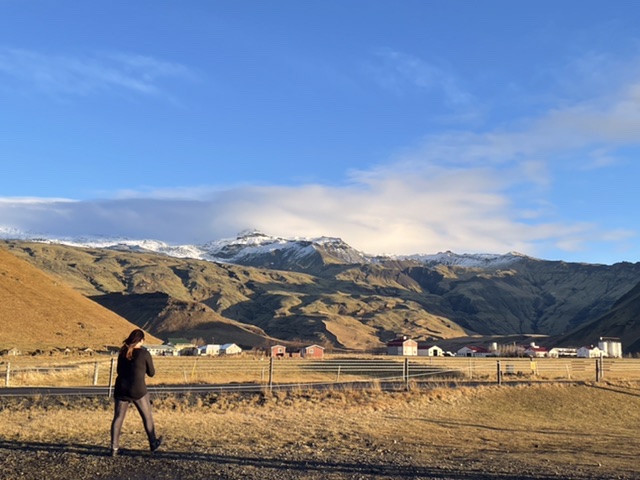
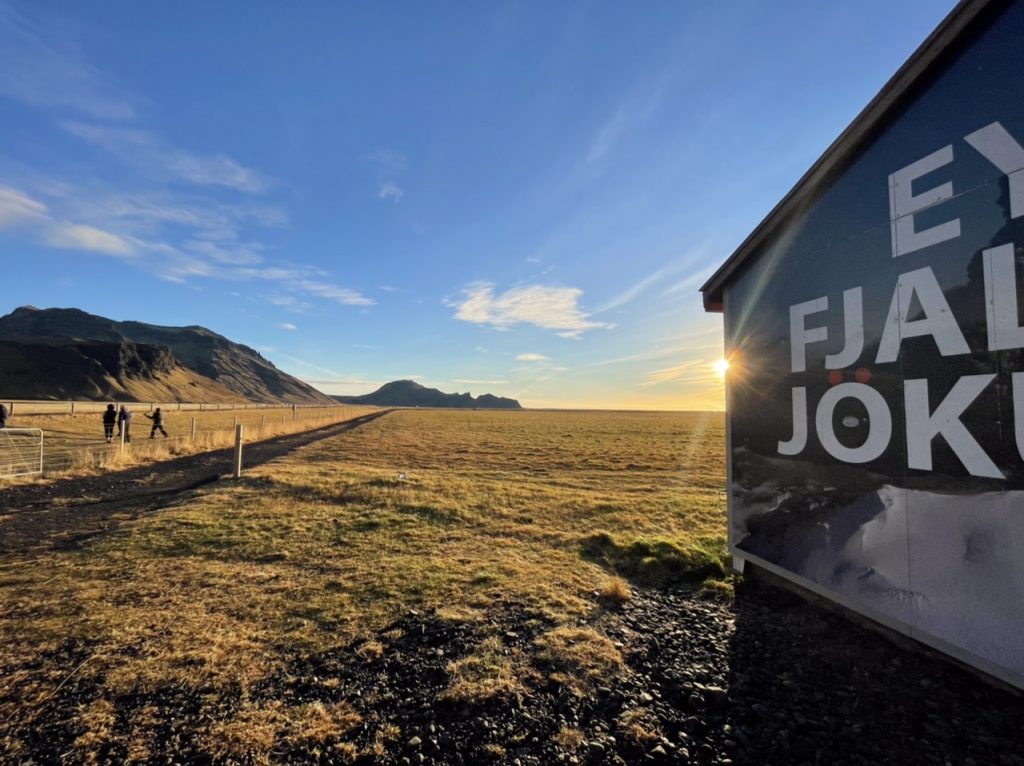
We then continued on to Skogarfoss – our first major waterfall of our trip. The sights were absolutely beautiful. Our guide indicated we did not have enough time for the group to scale the 500 foot climb to the top, but that rest assured the best views of the waterfall were taken from the bottom.
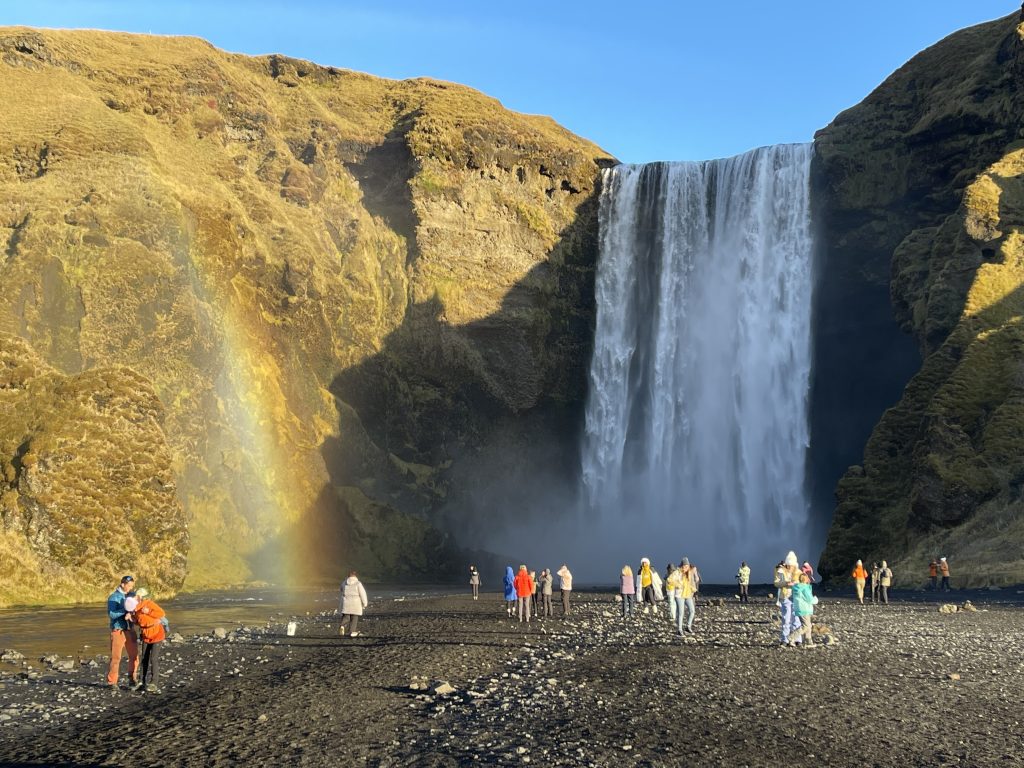
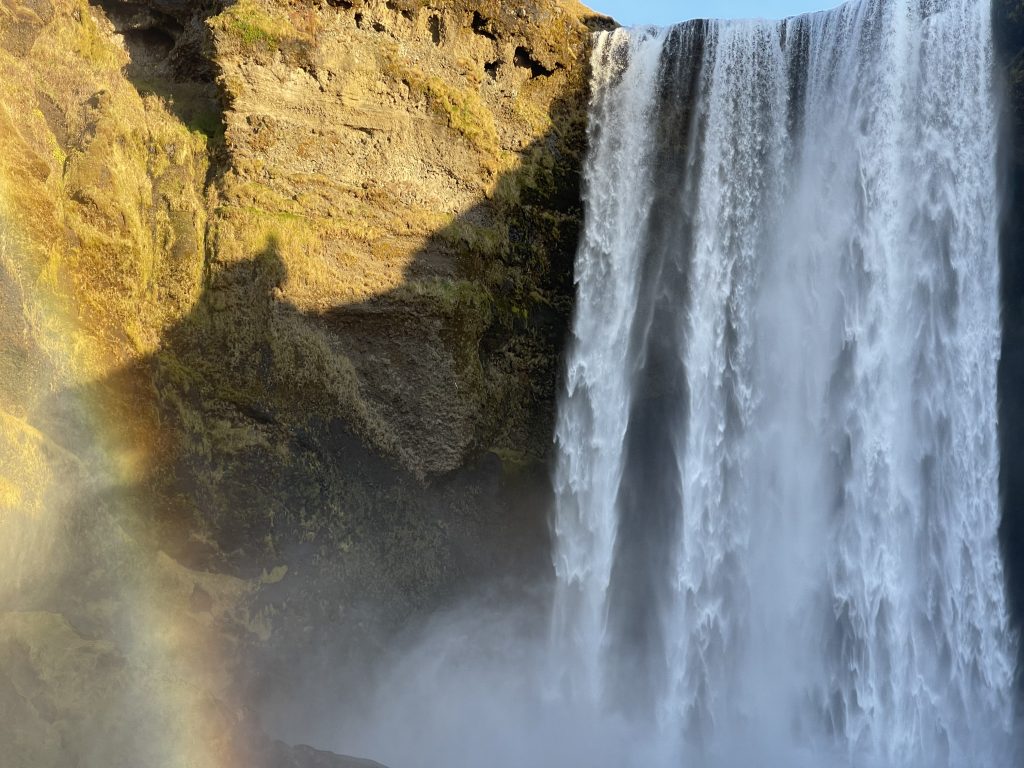
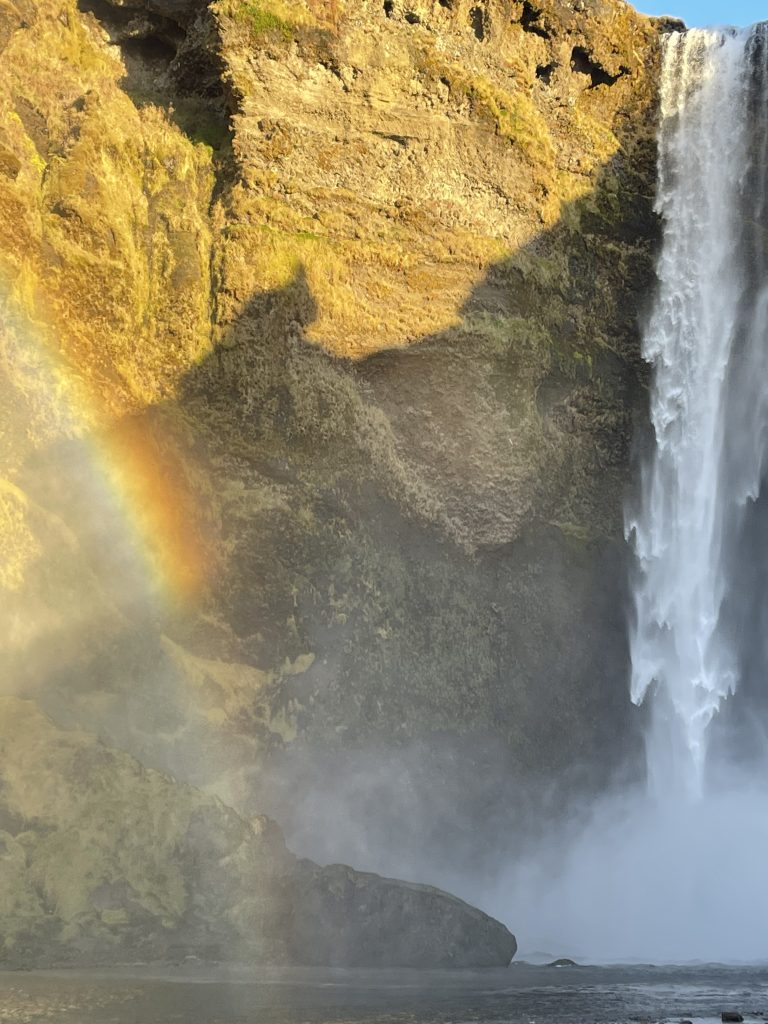
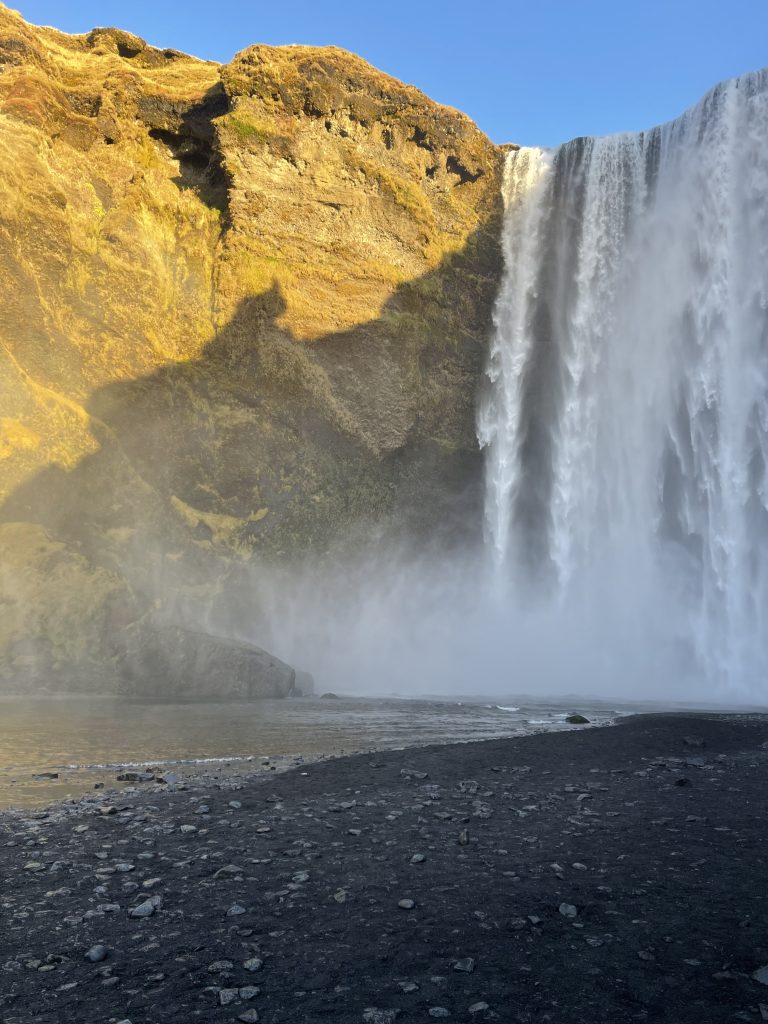
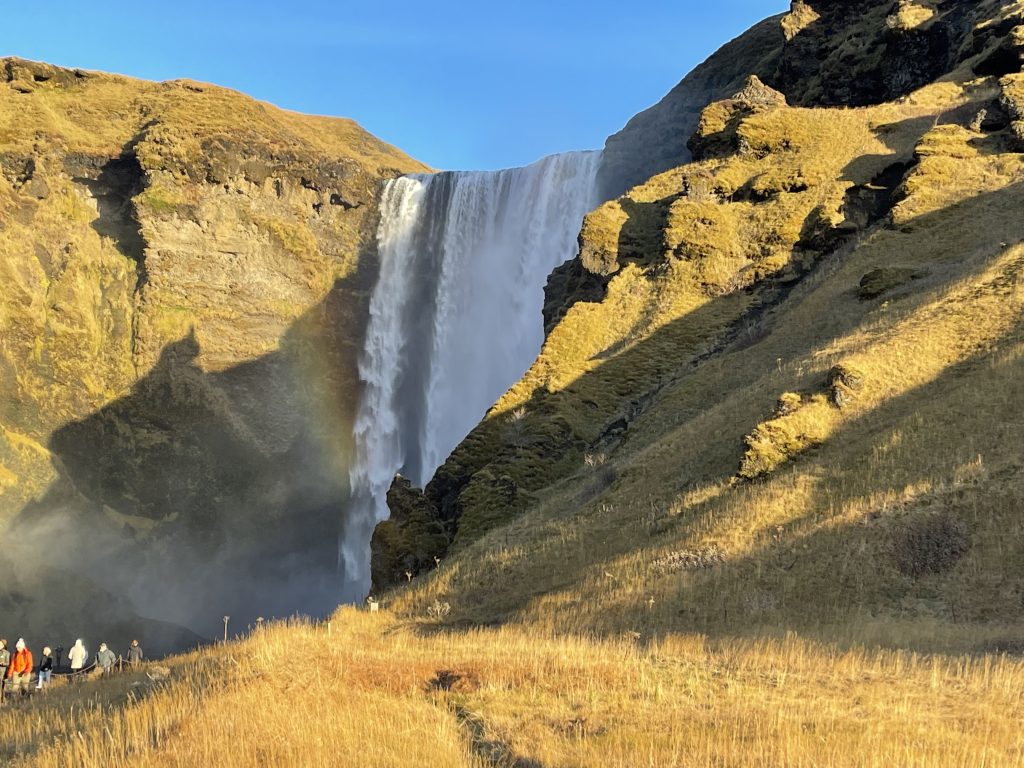
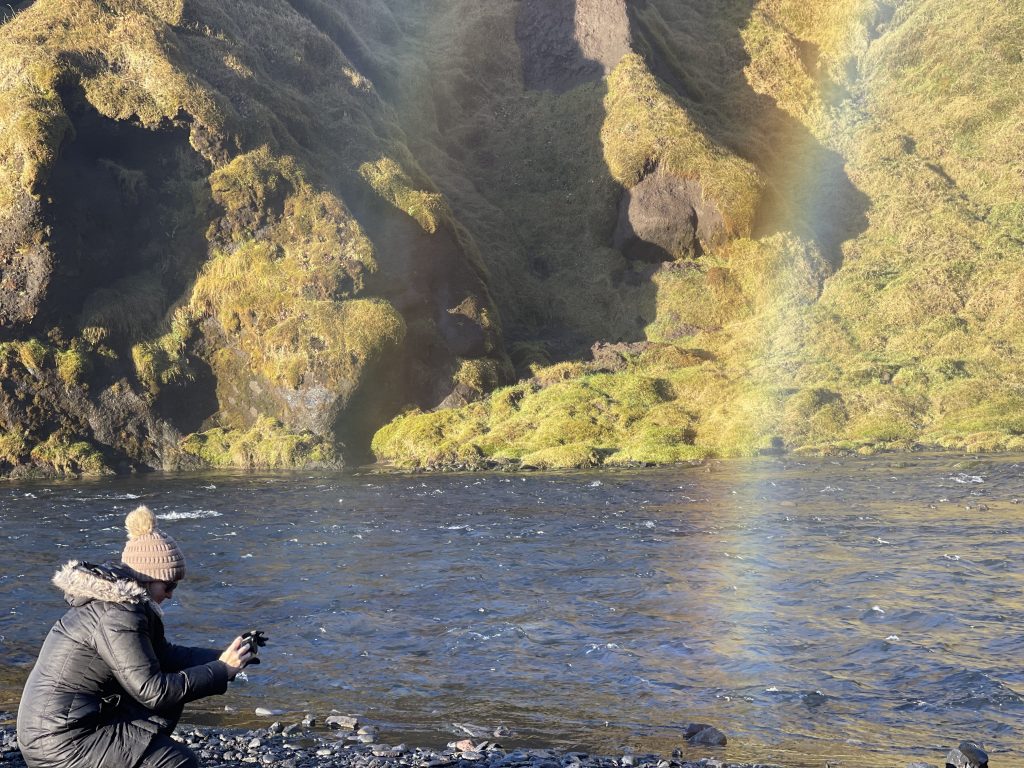
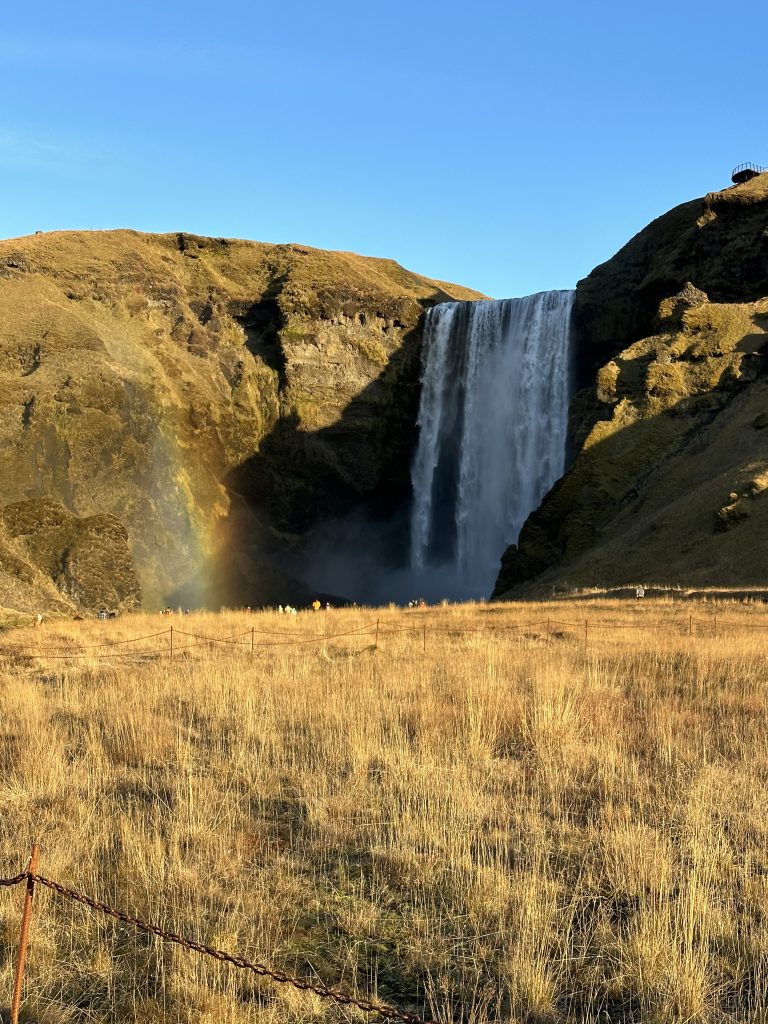
Next stop was our cultural lesson about the “olden times.” This is how Icelanders refer to the times from the island’s settlement by Vikings in 874 to around the year 1944 when the island truly secured its independence.
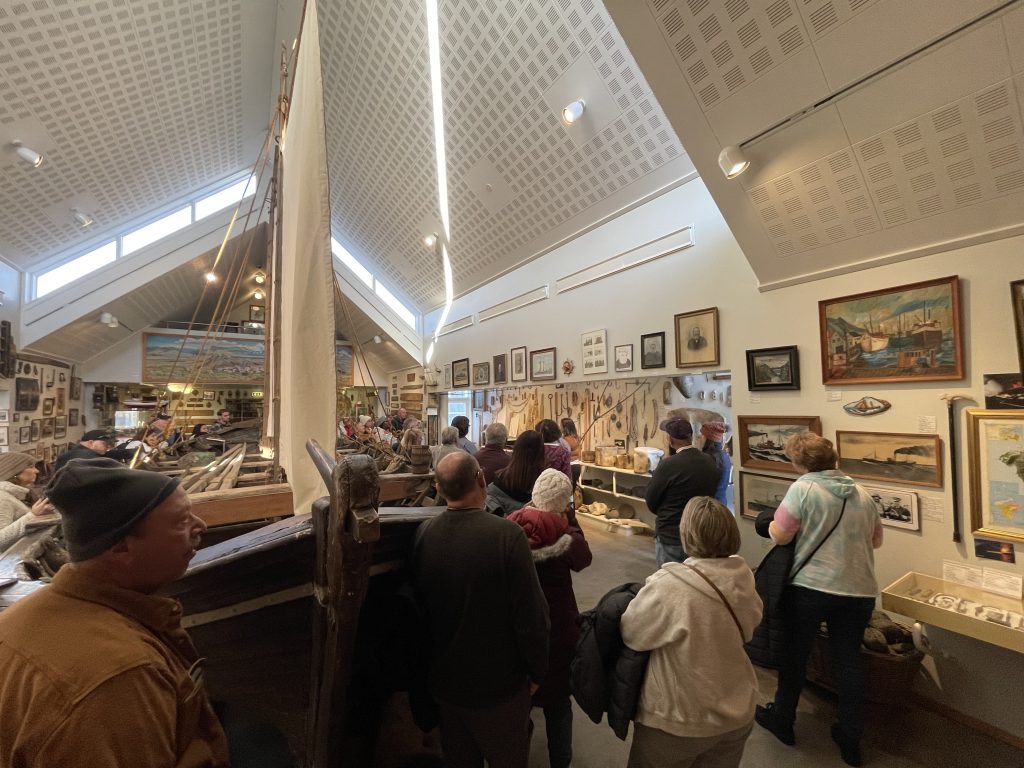
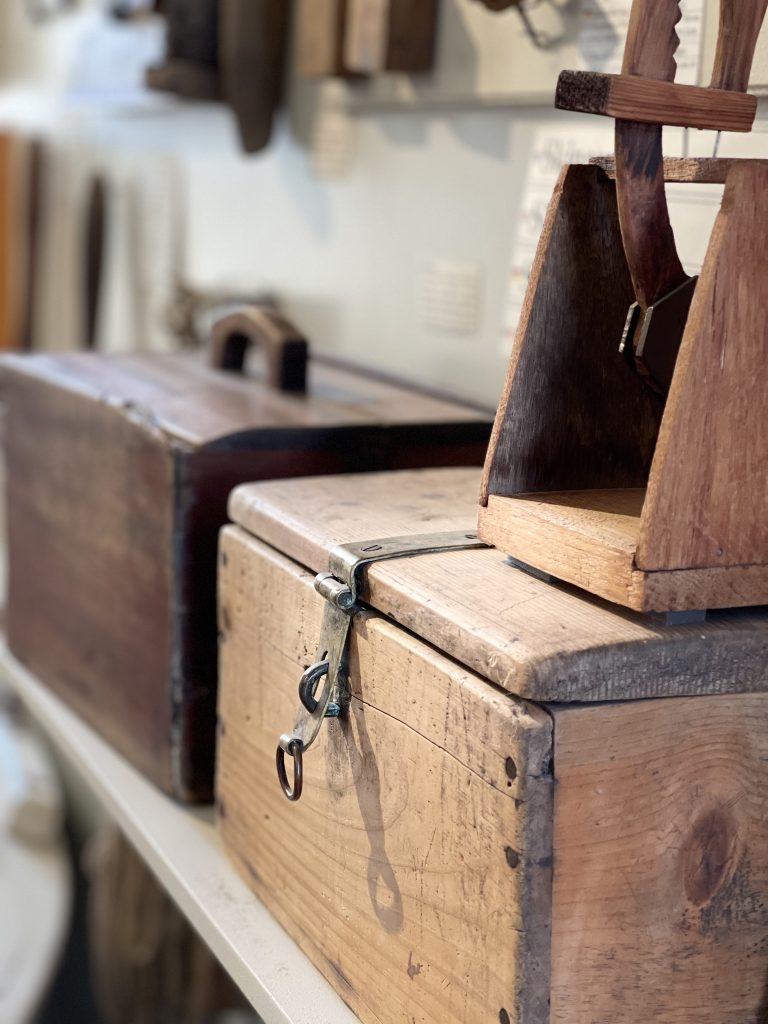
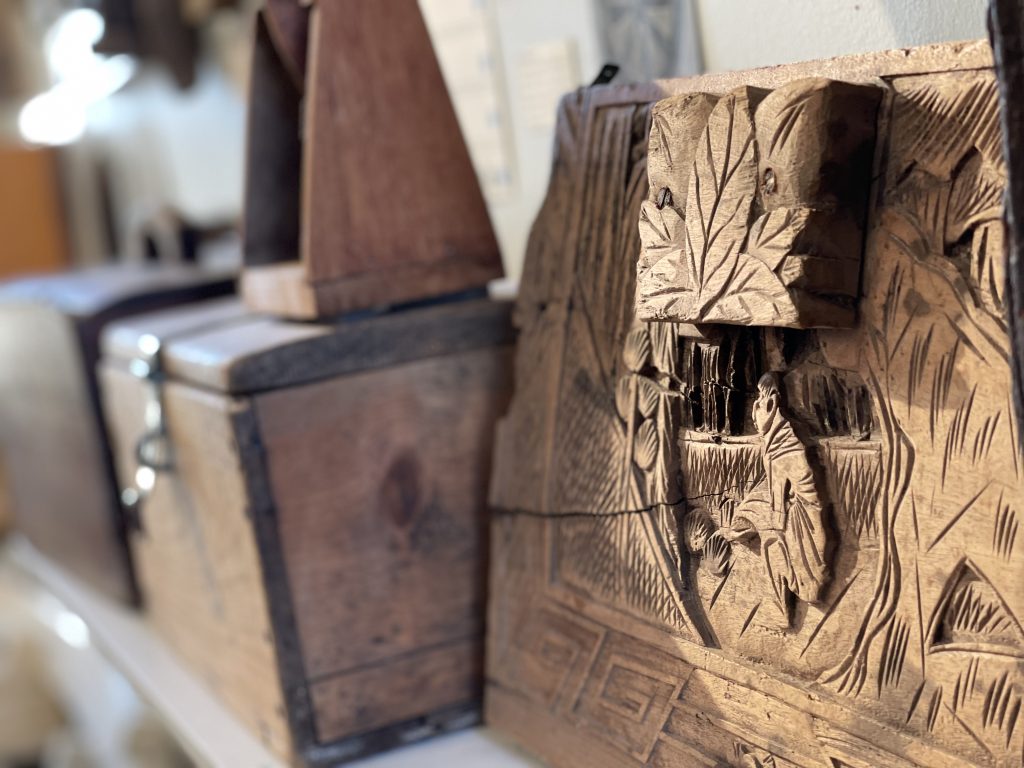
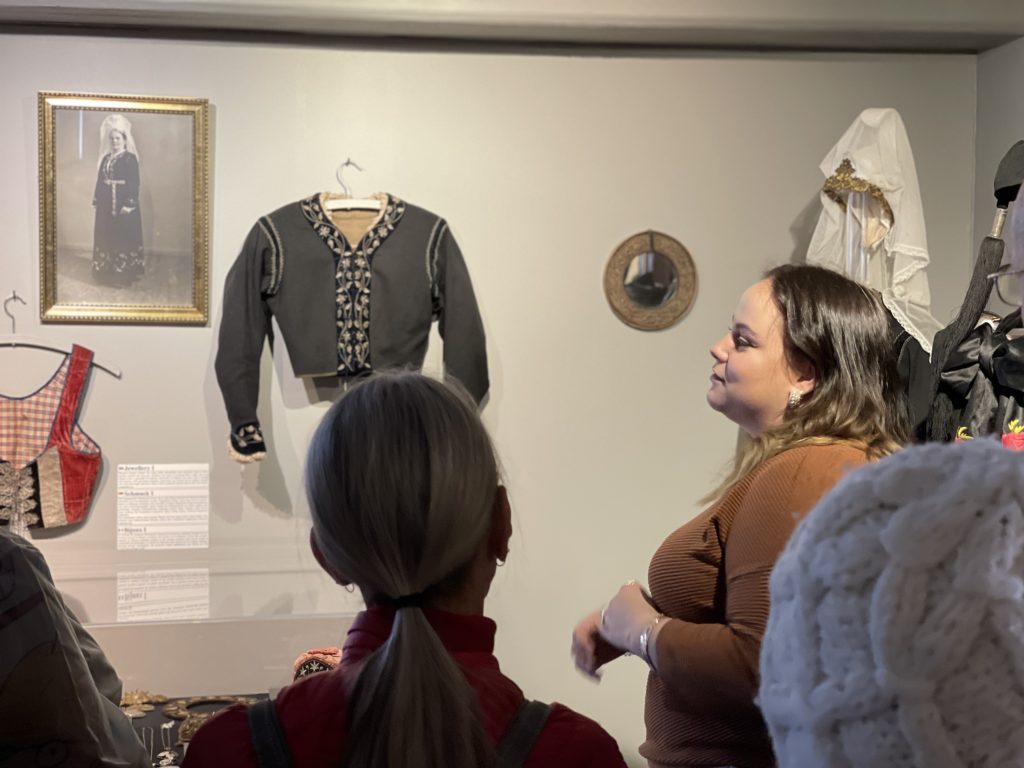
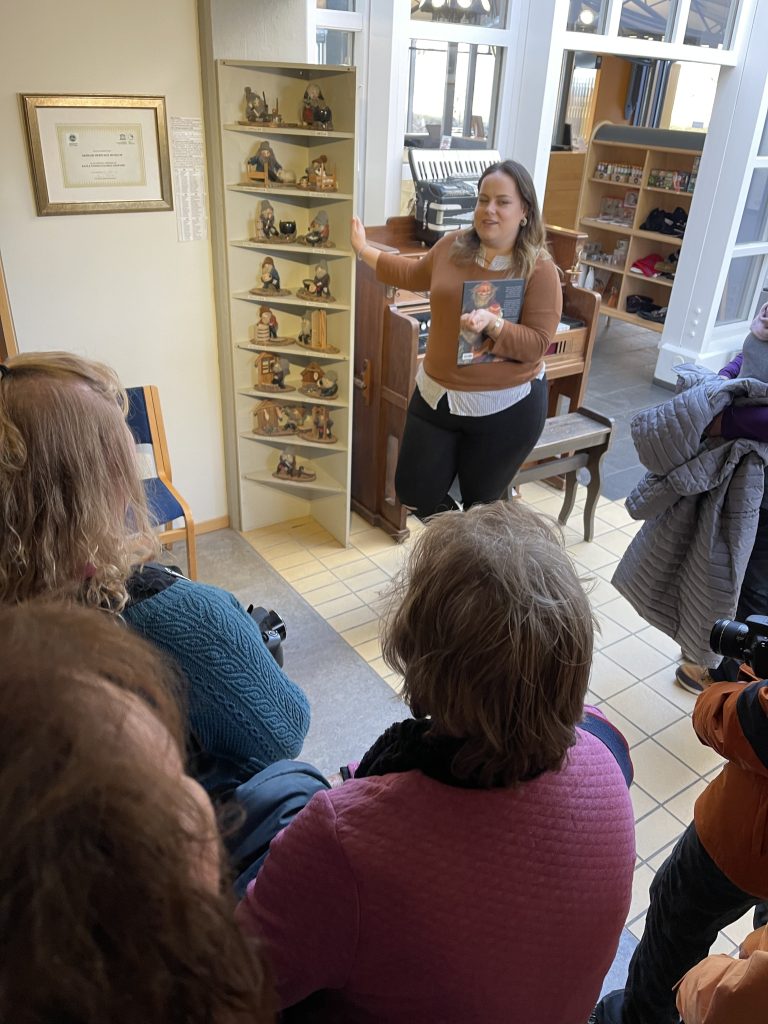
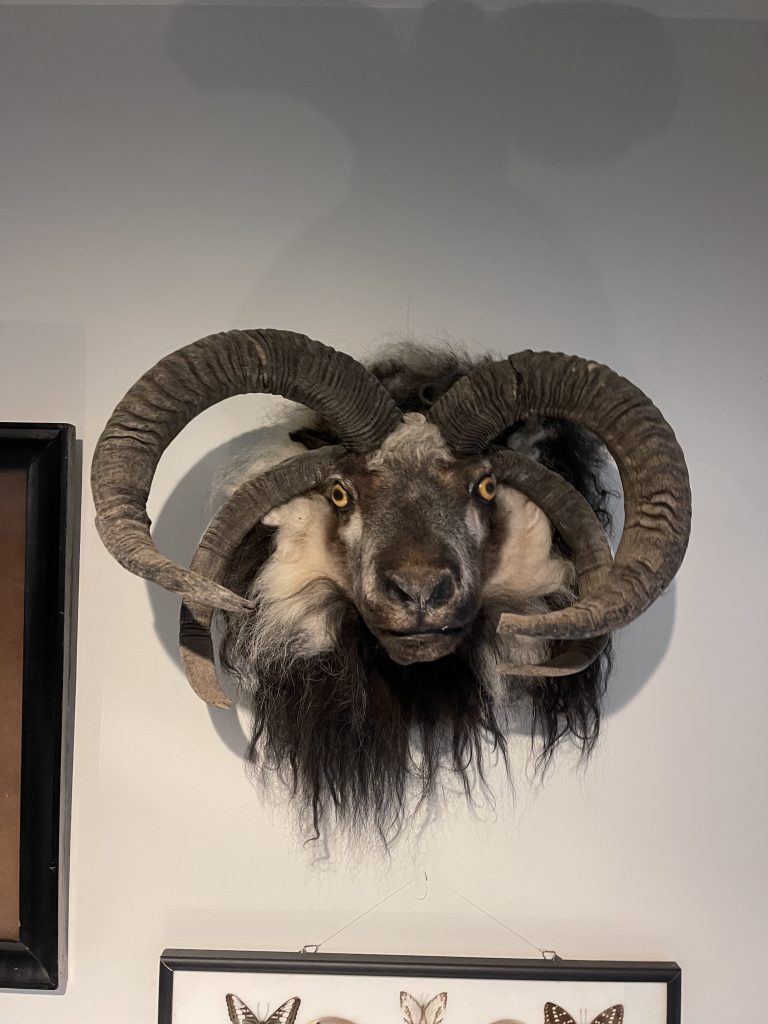
The year 874 has significance because the foundation of a Viking home unearthed in Reyjekavik has been dated to 871-874 using carbon dating. Based on historical records, they know that a Viking named Ingólfr Arnarson and his wife chose to settle here permanently. This was after several Norwegian Vikings accidentally found Iceland around 830-860, and that some evidence existed among Viking stories that Irish monks may have temporarily settled in Iceland but abandoned it with the arrival of the Norwegians.
The key facts to know about Iceland are life here was very difficult for a thousand years. Resources such as wood and fatty animals are rare if not nonexistent. The island is dangerous because it is basically a volcanic island in the Arctic Circle. We examined a small museum that used 18,000 artifacts to tell the story of this hard-fought life that was characterized by resilience in the face of freezing cold, severe lack of food, and nearly zero waste of any useful resource.
We had a chance to tour authentic turf houses. Remarkably, these homes were how Icelanders settled the island for over 1,000 years before the arrival of the modern interest in the Island around the start of the first World War.
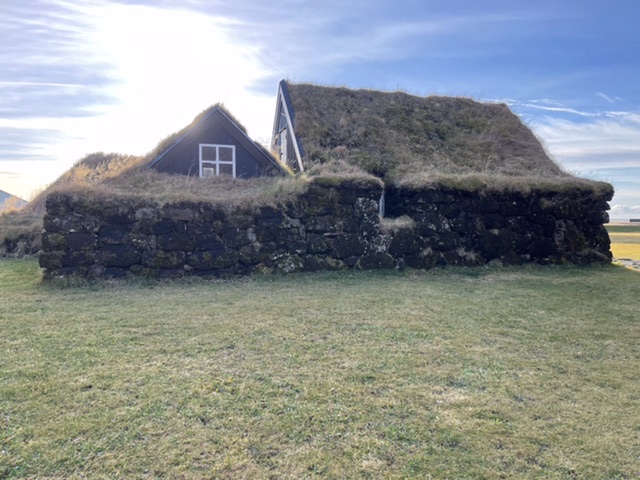
After the tour, we returned to the base of the waterfall for a lunch provided by the Alumni Council. Serena and I sat with 2021 graduate Michelle and her fellow CPC alum sister Christine. The small restaurant sat within 500 yards of the entrance to the Skogarfoss waterfall area. Serena and Michelle both were eyeing the 500-foot climb beside the waterfall and commenting on how much they wanted to make that climb. We agreed to time someone just entering the climb and if the time was reasonable, I would cover for them to go make the climb and return in time to board the bus.
Long story short, here is the photo of Serena, Michelle, and Christine after successfully scaling the waterfall and returning safely to the bottom (1,000 feet round trip) in just under 30 minutes total.
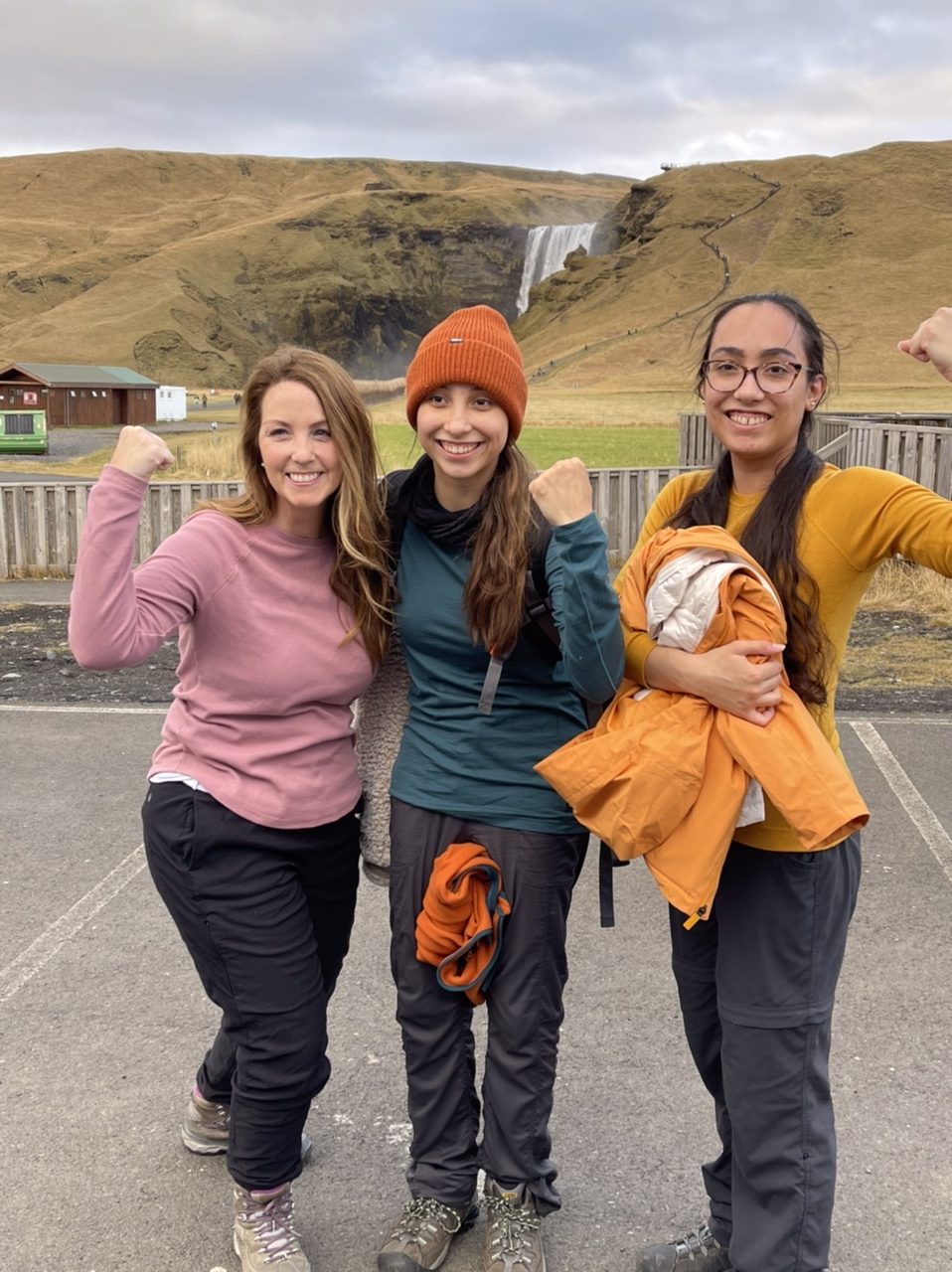
They had minutes to spare and did not keep the bus waiting. 😉
Back onto the road, we headed for the black sand beaches near Vik. First we entered a coastal observation area with scenic views of the Atlantic ocean and basalt columns. The volcanic land has made the beach sand and rocks of this region black.
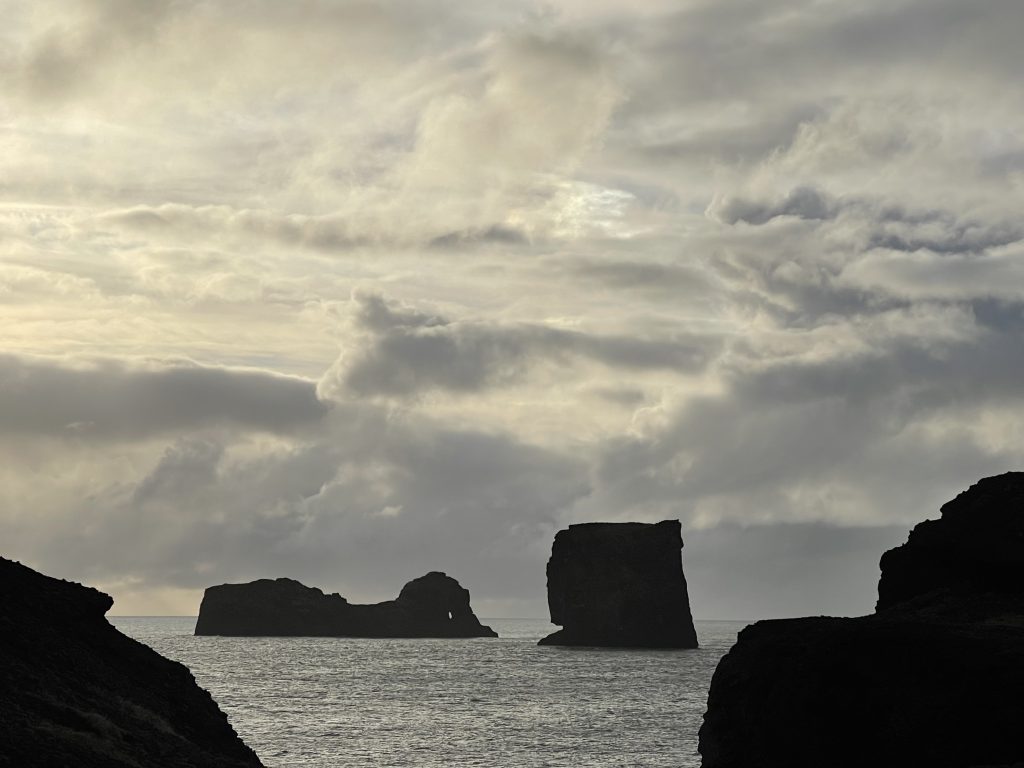
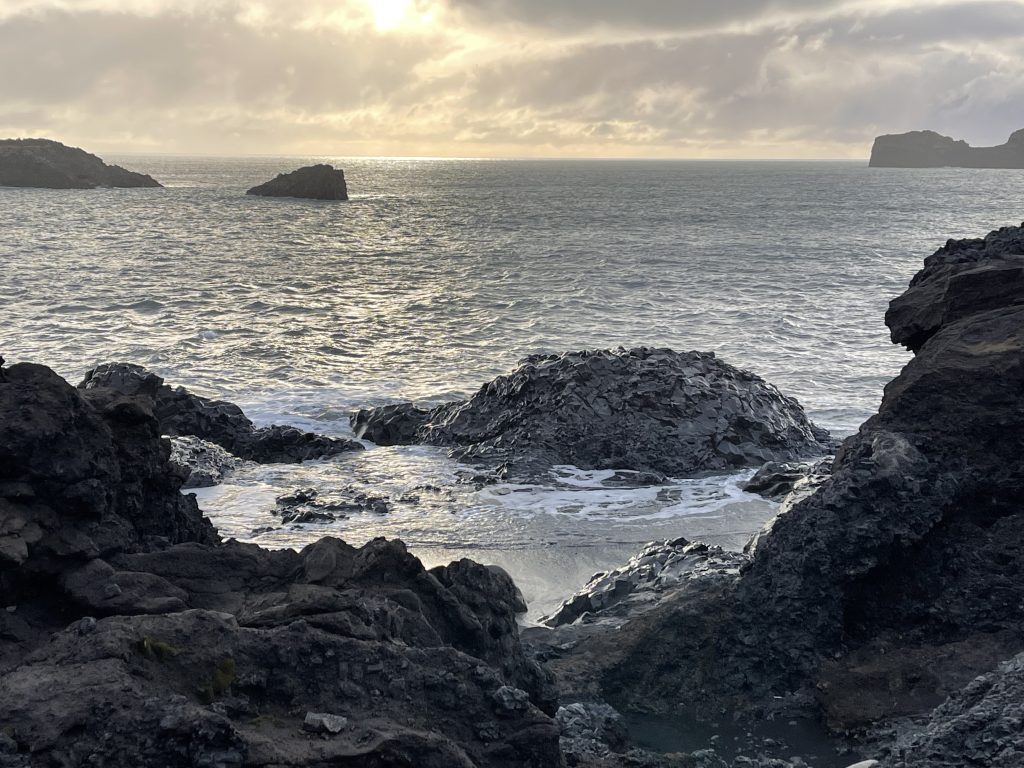
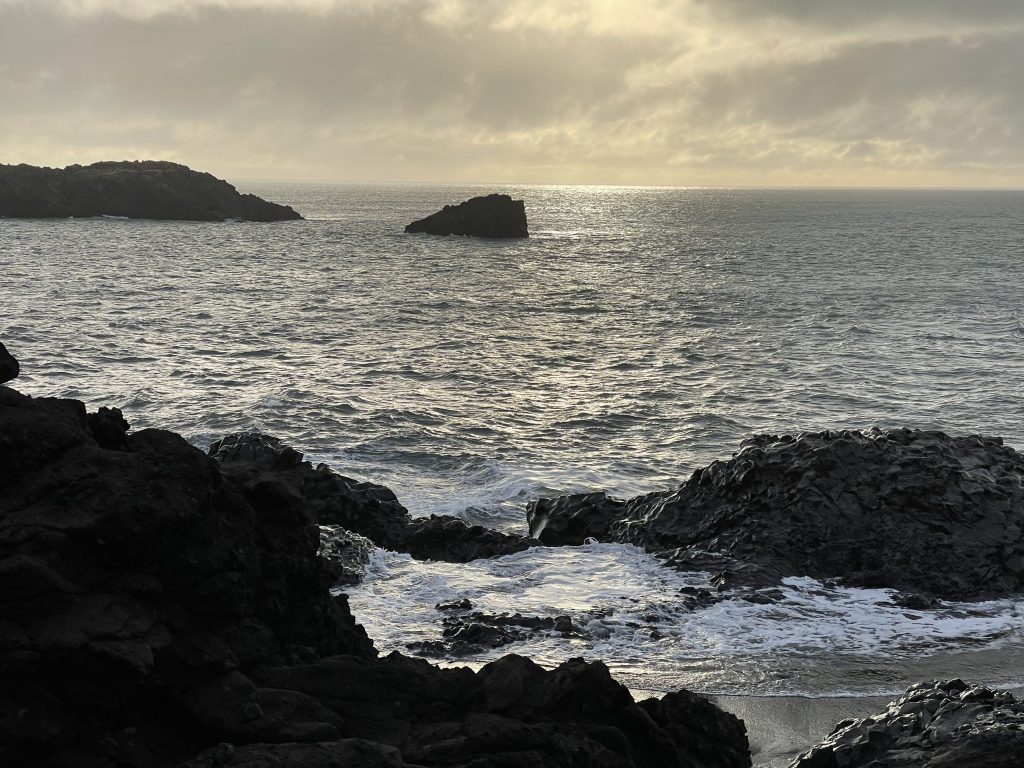
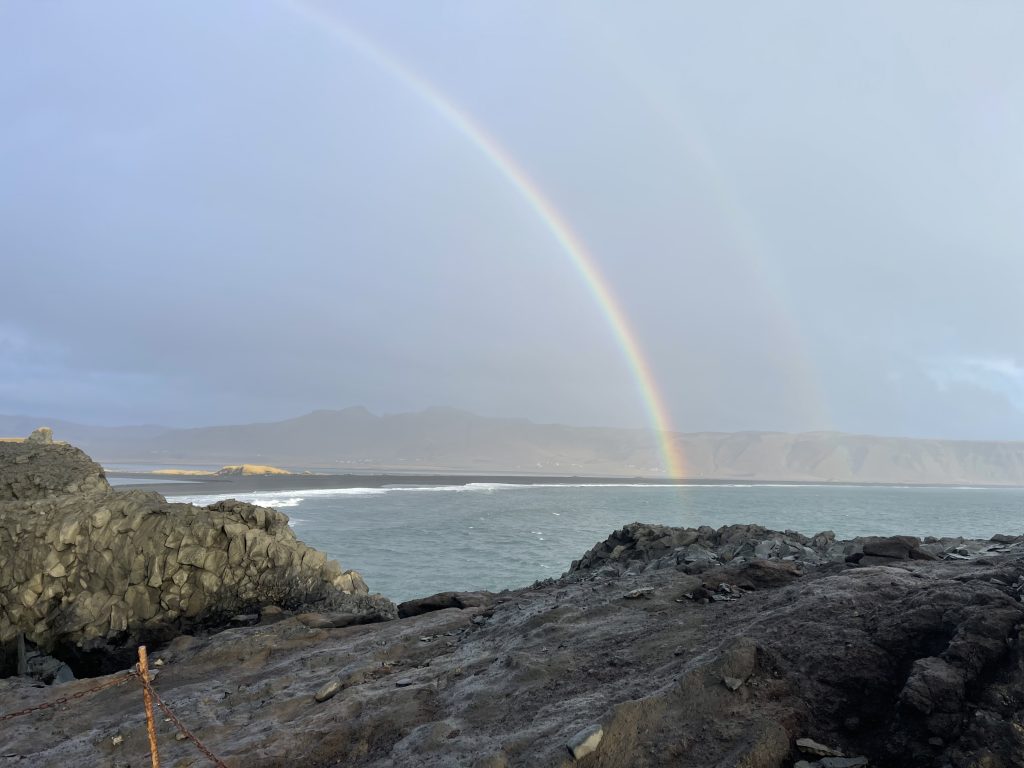
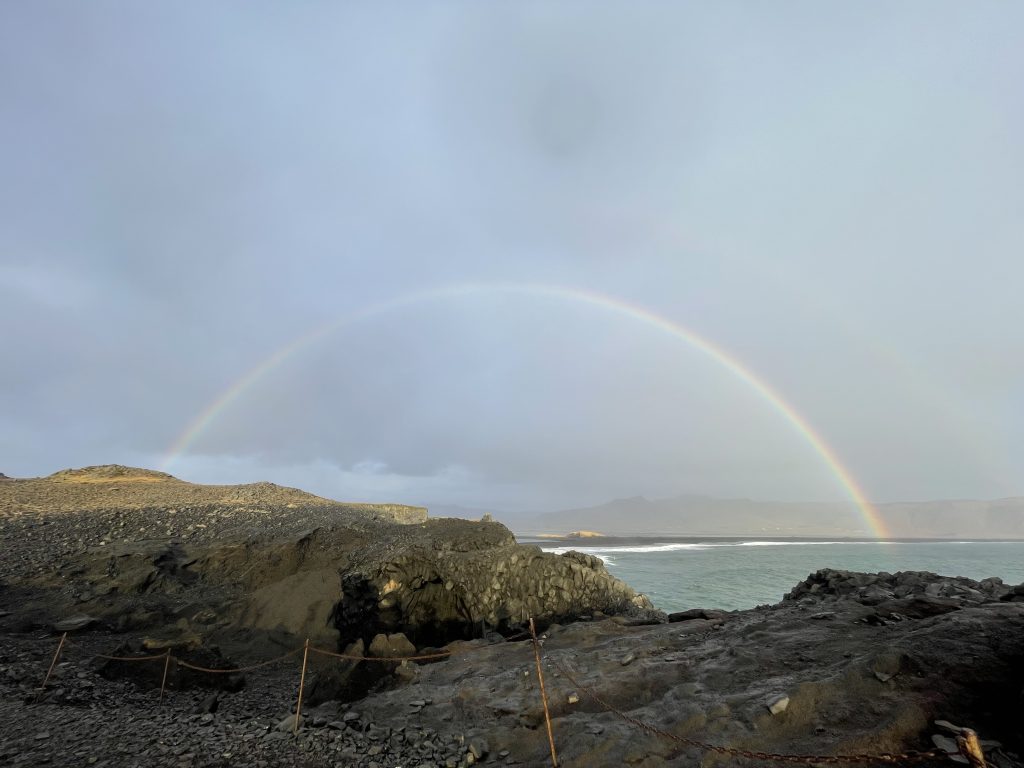
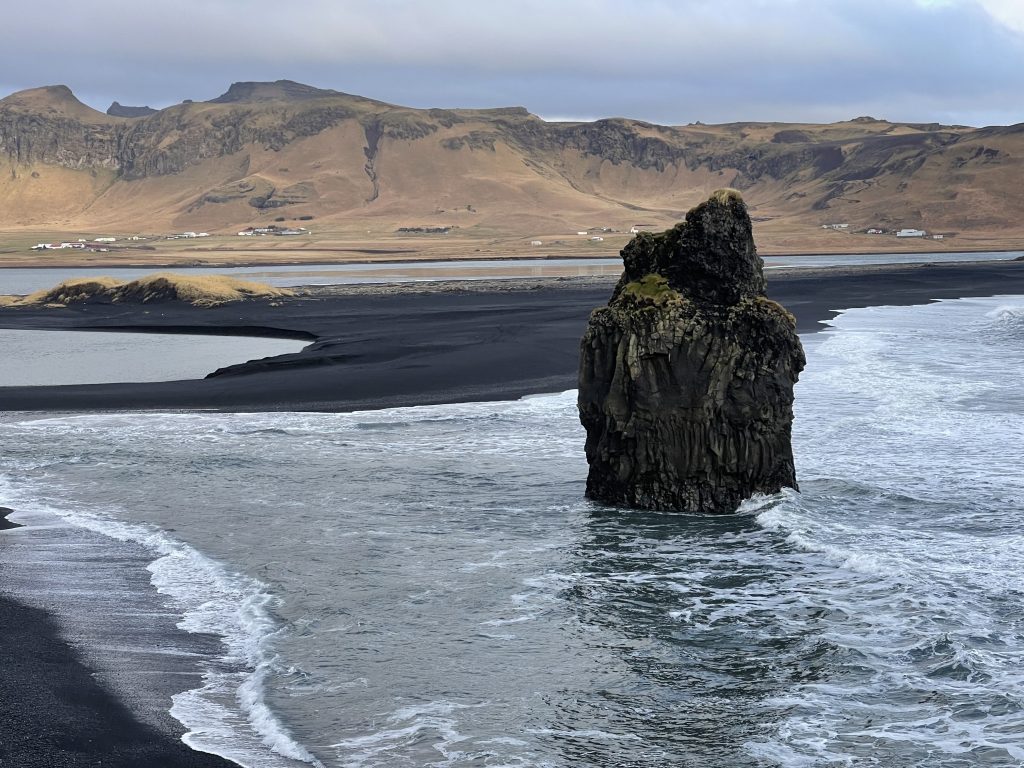
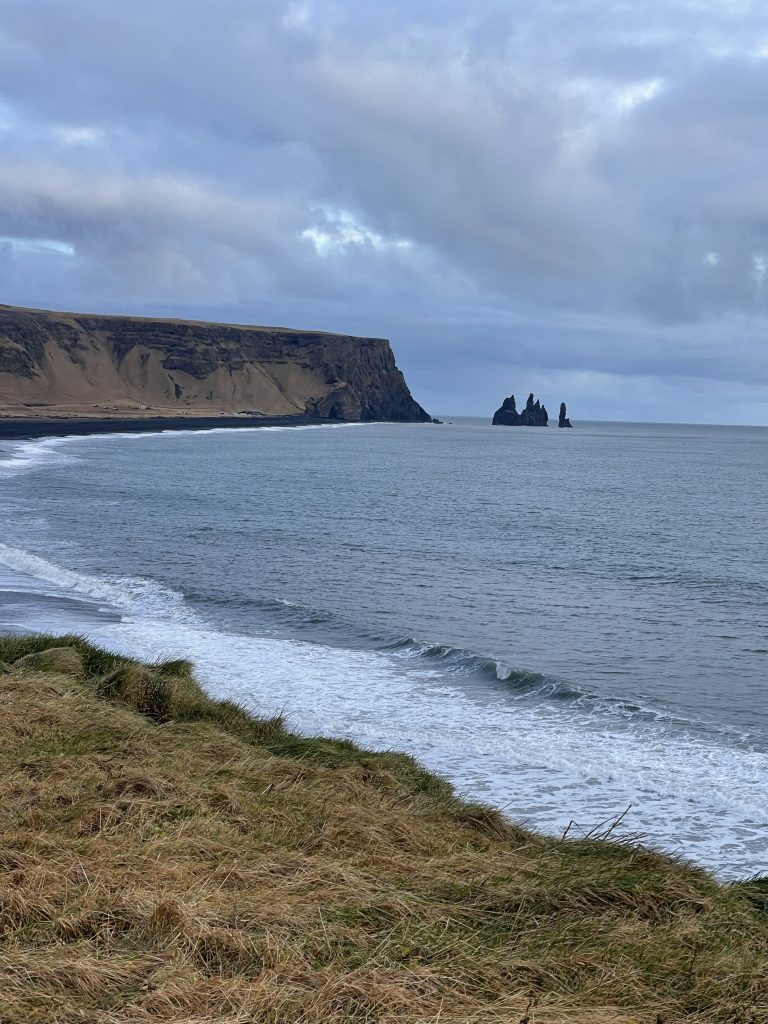
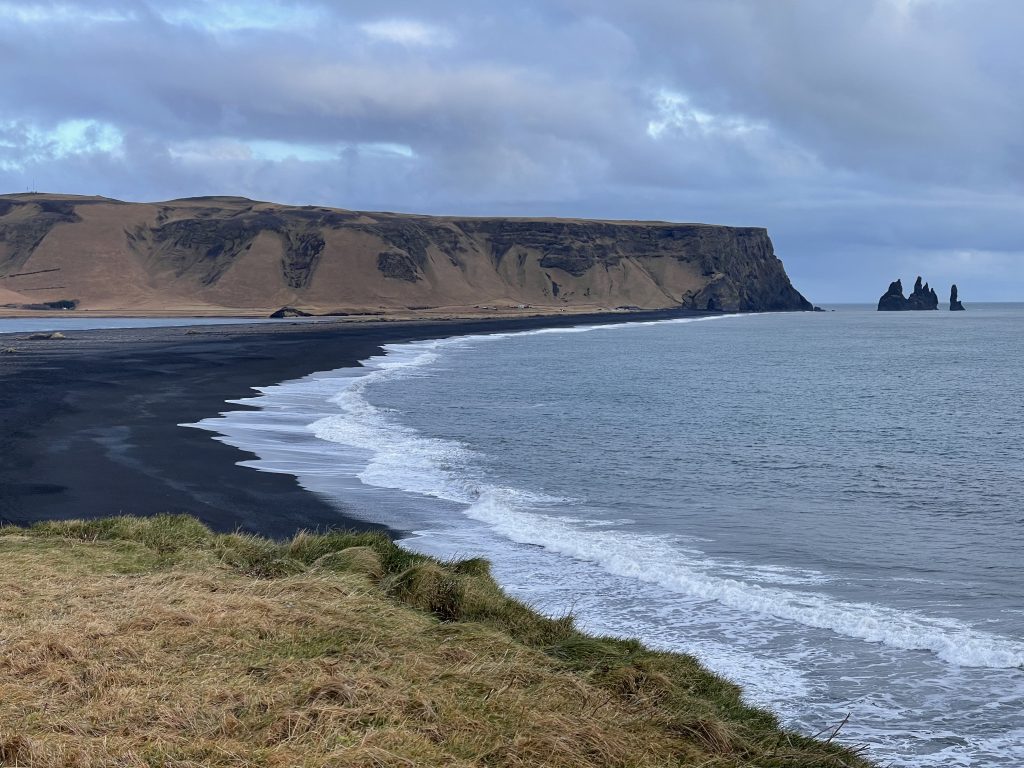
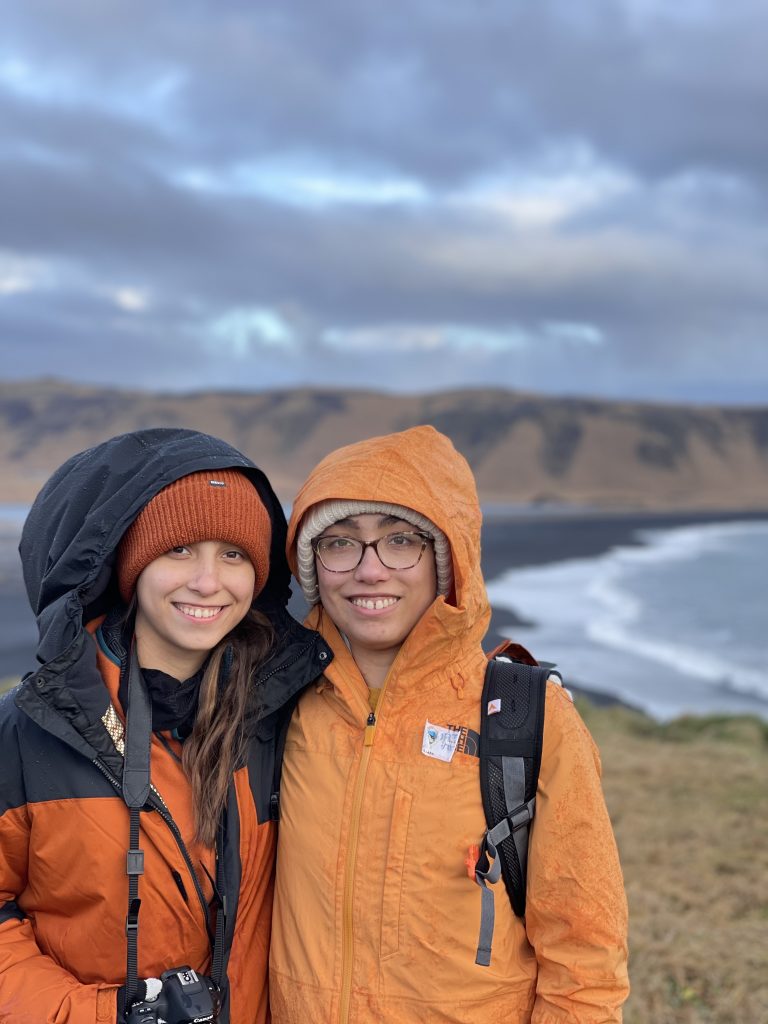
At a long stop in Vik, Serena and I slipped away to capture a photo of the iconic Vik church situated at the top of the hill overlooking the entire town. We had to hike through a neighborhood and a couple backyards to make it there and back in time for the bus, but the photos were worth it.
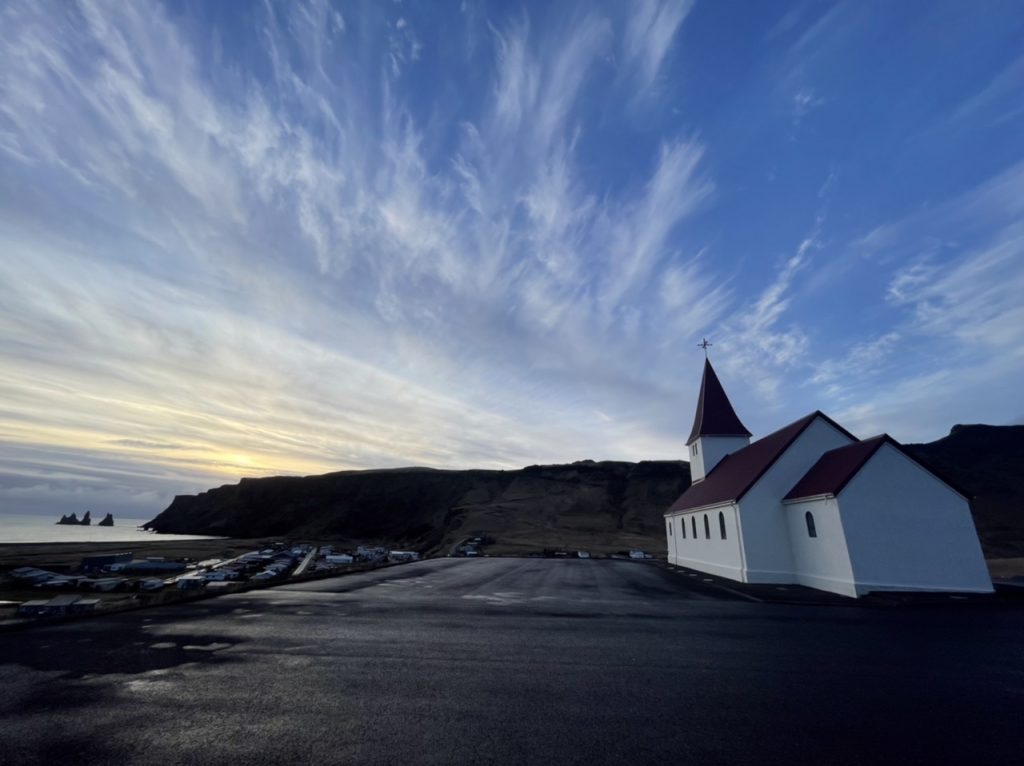
We were able to enjoy a solid 45 minutes at the Atlantic Coast. I snapped many photos of alumni enjoying the sea air.
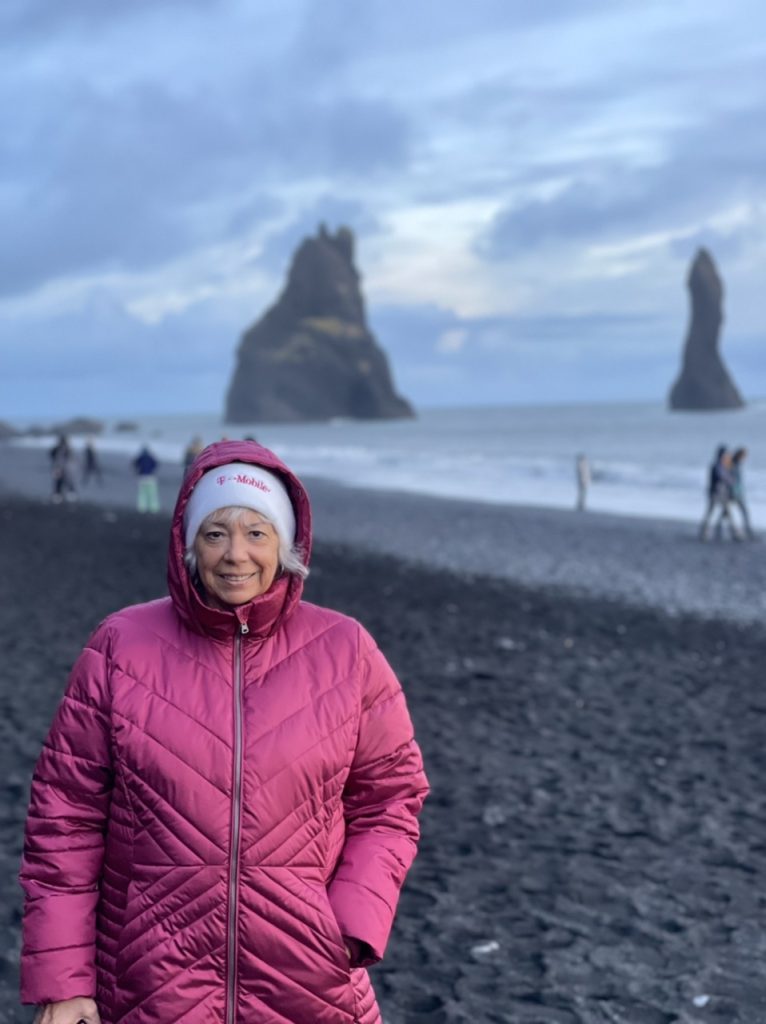
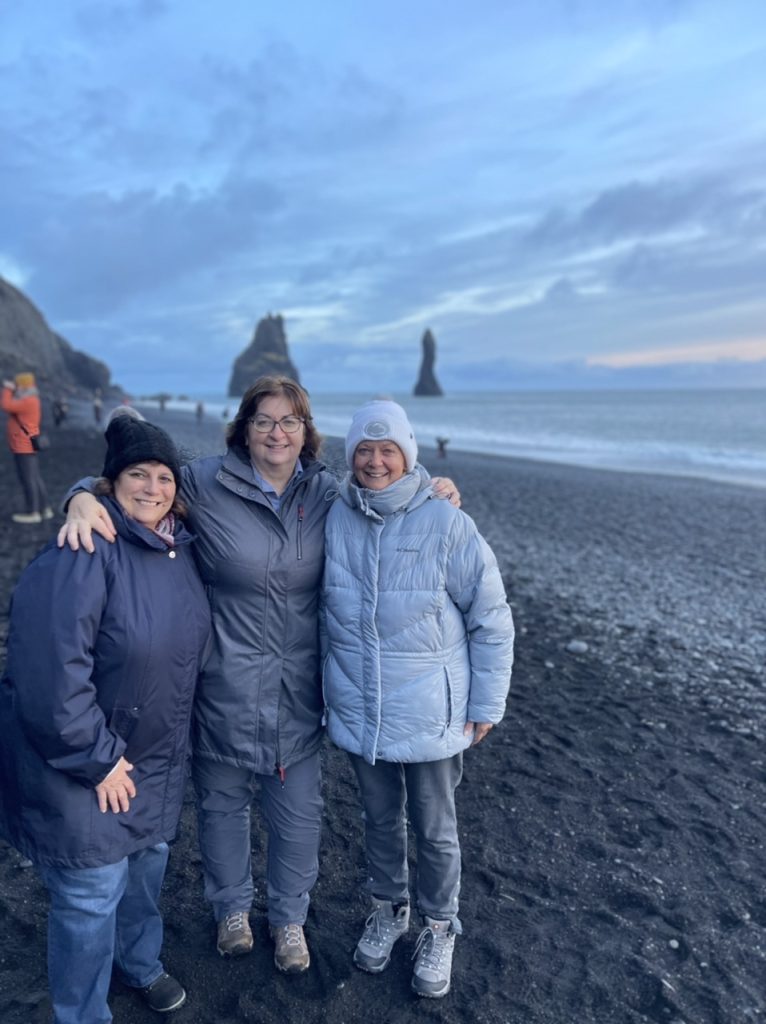
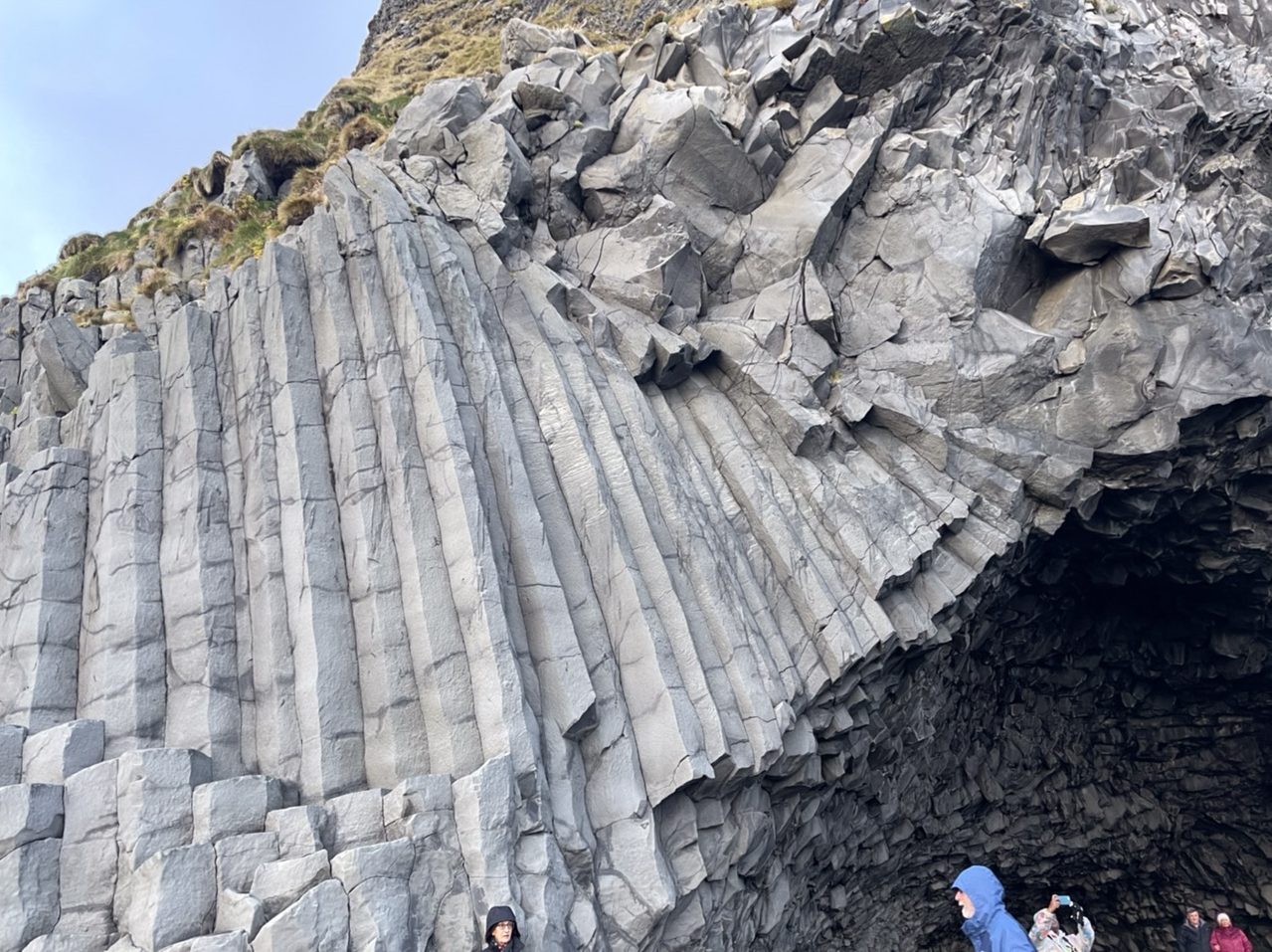
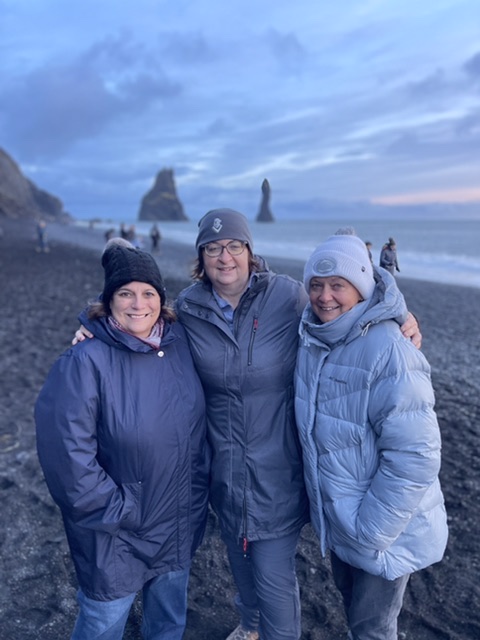
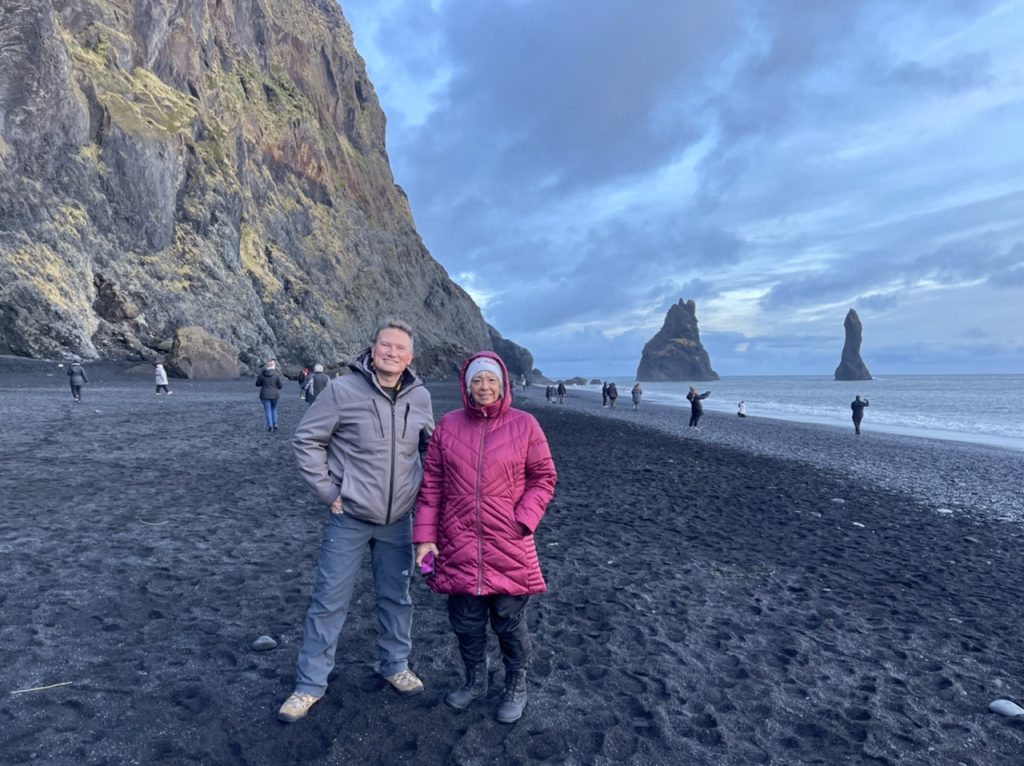
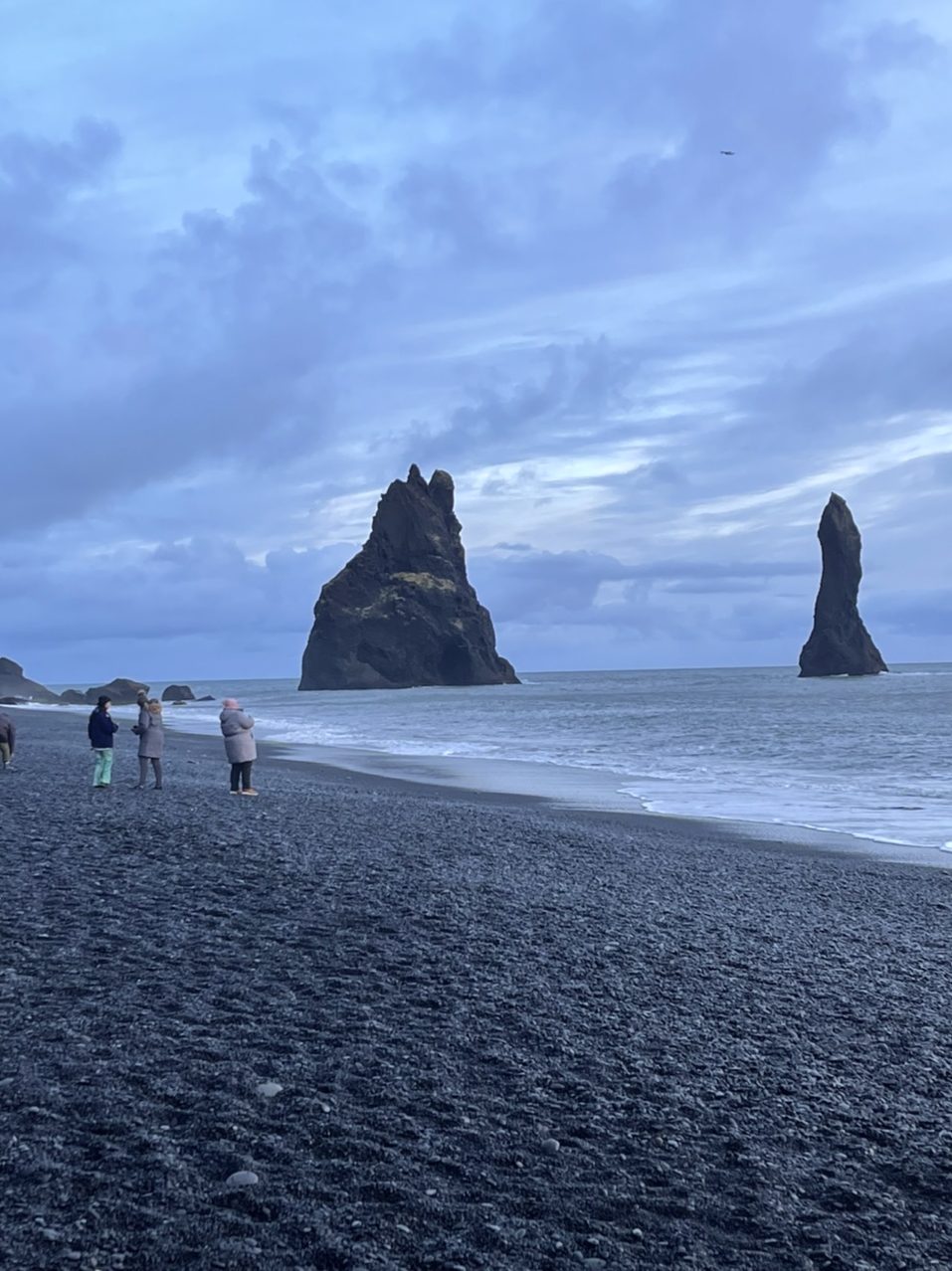
And to end the day, with darkness now full all around us, we stopped at one more waterfall lit brightly amongst the Icelandic darkness.
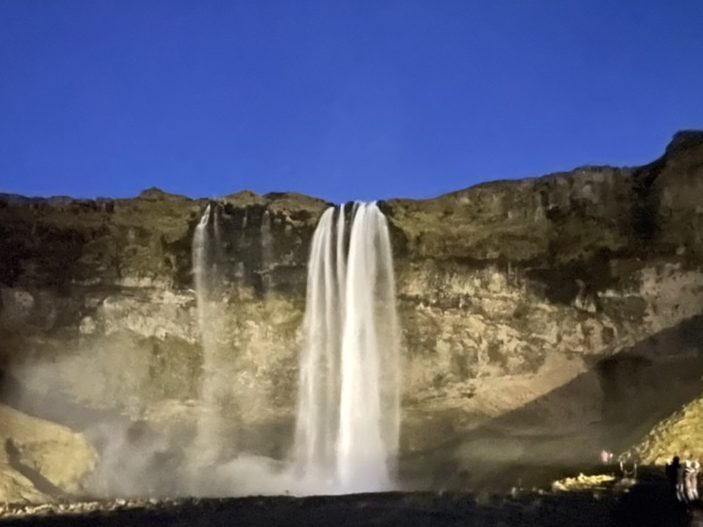
After dinner, the touring company and our local guide took us on a search for the Northern Lights. Although there was a strong chance to see them, the clouds were thick over us. The most memorable part of the night was listening to our guide tell us a traditional Icelandic bedtime story about a missing cow named Bukulla and trolls (a prominent part of Icelandic culture). Mention Bukulla to one of our travelers, and you’re sure to get a “moo” in response.

